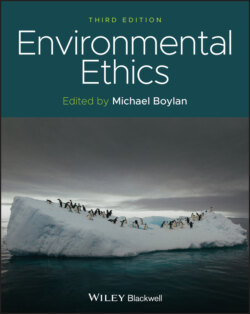Читать книгу Environmental Ethics - Группа авторов - Страница 24
Case 1: Social/Political Ethics
ОглавлениеThe Trolley Problem
You are the engineer of the Bell Street Trolley. You are approaching Lexington Avenue Station (one of the major hub switching stations). The switchman on duty there says there is a problem. A school bus filled with 39 children has broken down on the right track (the main track). Normally, this would mean that he would switch you to the siding track, but on that track is a car containing four adults that has broken down. The switchman asks you to apply your brakes immediately. You try to do so, but you find that your brakes have failed too. There is no way that you can stop your trolley train. You will ram either the school bus or the car killing either 39 children or four adults. You outrank the switchman. It is your call: what should you do?
Secondary nuance: what if the switchman were to tell you that from his vantage point on the overpass to the Lexington Avenue Station there is a rather obese homeless person who is staggering about. What if (says the switchman) he were to get out of his booth and push the homeless person over the bridge and onto the electric lines that are right below it? The result would be to stop all trains coming into and out of the Lexington Avenue Station. This would result in saving the lives of the occupants of the two vehicles. Of course, it would mean the death of the obese homeless person. The switchman wants your OK to push the homeless man over the bridge. What do you say?
Analysis
This case has two sorts of interpretation: before and after the nuance addition. In the first instance, one is faced with a simple question: should you kill four people or 39? The major moral theories give different answers to this question. First, there is the point of view of utilitarianism. It would suggest that killing four causes less pain than killing 39. Thus, one should tell the switchman to move you to the siding.
There is the fact that when the car was stuck on the siding, the driver probably viewed his risk as different from being stuck on the main line. Thus, by making that choice you are altering that expectation: versus the bus driver who has to know that he is in imminent danger of death. Rule utilitarians might think that moving away from normal procedures requires a positive alternative. Killing four people may not qualify as a positive alternative (because it involves breaking a rule about willful killing of innocents). Thus, the utilitarian option may be more complicated than first envisioned.
Rule utilitarianism would also find it problematic to throw the homeless person over the bridge for the same reason; though the act utilitarian (the variety outlined above) might view the situation as killing one versus four or 39. However, there is the reality that one is committing an act of murder to save others. This would be disallowed by the rule utilitarian. If the act utilitarian were to consider the long-term social consequences in sometimes allowing murder, he would agree with the rule utilitarian. However, without the long-term time frame, the act utilitarian would be committed to throwing the homeless person over the bridge.
The deontologist would be constrained by a negative duty not to kill. It would be equally wrong from a moral viewpoint to kill anyone. There is no moral reason to choose between the car and the bus. Both are impermissible. However, there is no avoidance alternative. You will kill a group of people unless the homeless person is thrown over the bridge. But throwing the homeless person over the bridge is murder. Murder is impermissible. Thus, the deontologist cannot allow the homeless person to be killed—even if it saved four or 39 lives. Because of this, the deontologist would use other normative factors, such as aesthetics, to choose whether to kill four or 39 (probably choosing to kill four on aesthetic grounds).
The virtue ethics person or the ethical intuitionist would equally reply that the engineer should act from the appropriate virtue, say justice, and do what a person with a just character would do. But this does not really answer the question. One could construct various scenarios about it being more just to run into the school bus rather than the car when the occupants of the car might be very important to society: generals, key political leaders, great physicists, etc. In the same way, the intuitionists will choose what moral maxim they wish to apply at that particular time and place. The end result will be a rather subjectivist decision-making process.
Finally, non-cognitivism and contractarianism are constrained to issues such as: “What does the legal manual for engineers tell them to do in situations like this?” If the manual is silent on this sort of situation, then the response is: What is the recommended action for situations similar to this in some relevant way? This is much like the decision-making process in the law where stare decisis et non quieta movere (support the decisions and do not disturb what is not changed). In other words, one must act based upon a cultural–legal framework that provides the only relevant context for critical decisions.
In any event, the reader can see that the way one reasons about the best outcome of a very difficult situation changes when one adds ethics to the decision-making machinery. I invite readers to go through several calculations on their own for class discussion. Pick one or more moral theory and set it out along with prudential calculations such that morality is the senior partner in the transaction. One may have to return to one’s personal worldview (critically understood, as per above), and balance it with the practical considerations and their embeddedness to make this call.
